how to clean up my startup disk
When the content "Your startup disk is almost cram full" appears on a Mac, most users induce lost. Our financial backing team at Nektony got many emails from the users asking how to fix the overladen inauguration disk error. So supported 7+ years receive in safely cleaning Mac from junk files, we've decided to write a comprehensive guide about Mack startup magnetic disk.
A startup disk on Mac is a hard drive's partition where macOS is installed. By default, the Startup Disk is the disk named "Macintosh HD" and the user's applications, files, and any data are also stored on this disk. You give the sack alter that advert but it would tranquil be the startup disk of your Mac.
The dissuasive message indicating that your startup magnetic disc is almost full appears when there is no longer enough free space on your disk. This is a great deal due to having too many files occupying your Macintosh's hard push, bringing free distance to a dangerously low tied. To solve this issue, you need to free up whatsoever disk space.
Here is the message the users get when the startup disk is full:
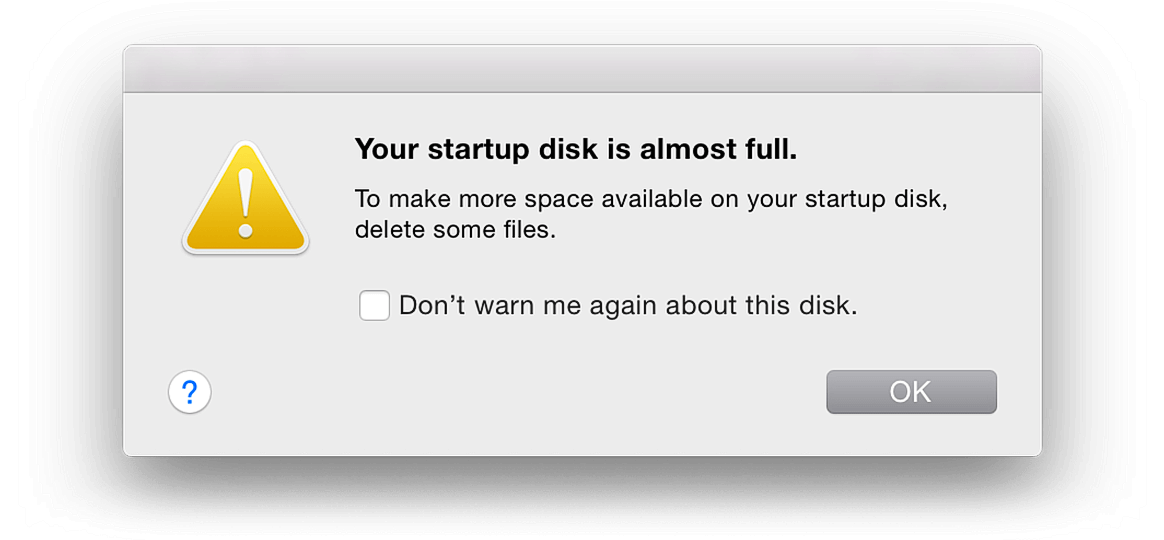
Since macOS Gigantic Sur, the warning message about running low on disk blank space looks like that: 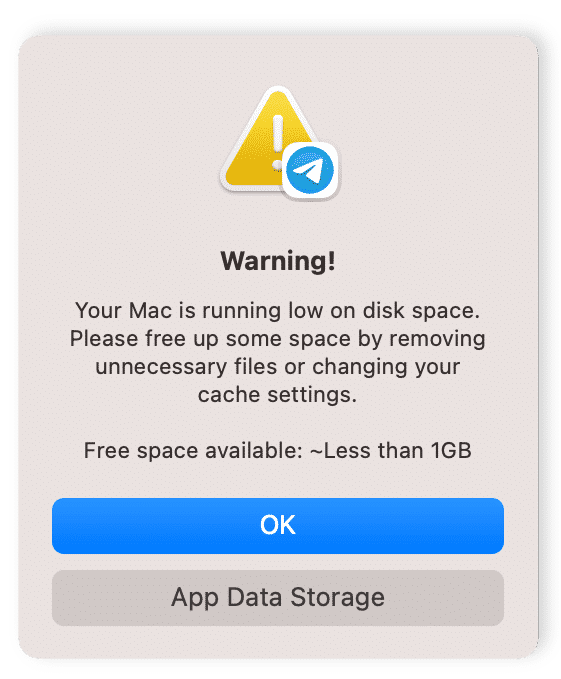
How does "Startup Disk Good" touch your Mac?
Want of unloose blank on the startup disk leads to some unstable and slow performance of the macOS scheme. Information technology can as wel prevent applications from organism able to launching or do work properly, including all of a sudden crashing or only ceasing to operate.
What to do if the startup disk is full on Mackintosh
In national, when your Mac startup phonograph recording is full, you need to clean up your Mac and recover some quad. For the macOS system to work decently, you will need to free up from 10 to 30 Gigabytes aside removing uncalled-for files.
You can clear caches and other temporary files, uninstall unused apps, remove duplicate files and delete other junk on your Mac. This would free up much space on your disk. You can either remove junk files manually or use MacCleaner Pro to perform this task quickly and easily.
Watch the video to see how easy it is to fix full moon startup platter error with MacCleaner Pro.
Video Guide
Also, you should analyze your disk space usage and remove all unneeded digital stuff. For example, you can upload several large files to the cloud or offload them to a reliever disk, however, this approach requires you to have additional computer memory.
How to check startup phonograph record on your Mac
Follow the next stairs to see what kind of files use up your startup platter space.
- Click menu at the .
- Click the tab.
- Review articl the storage custom to see what files are eating up blank.
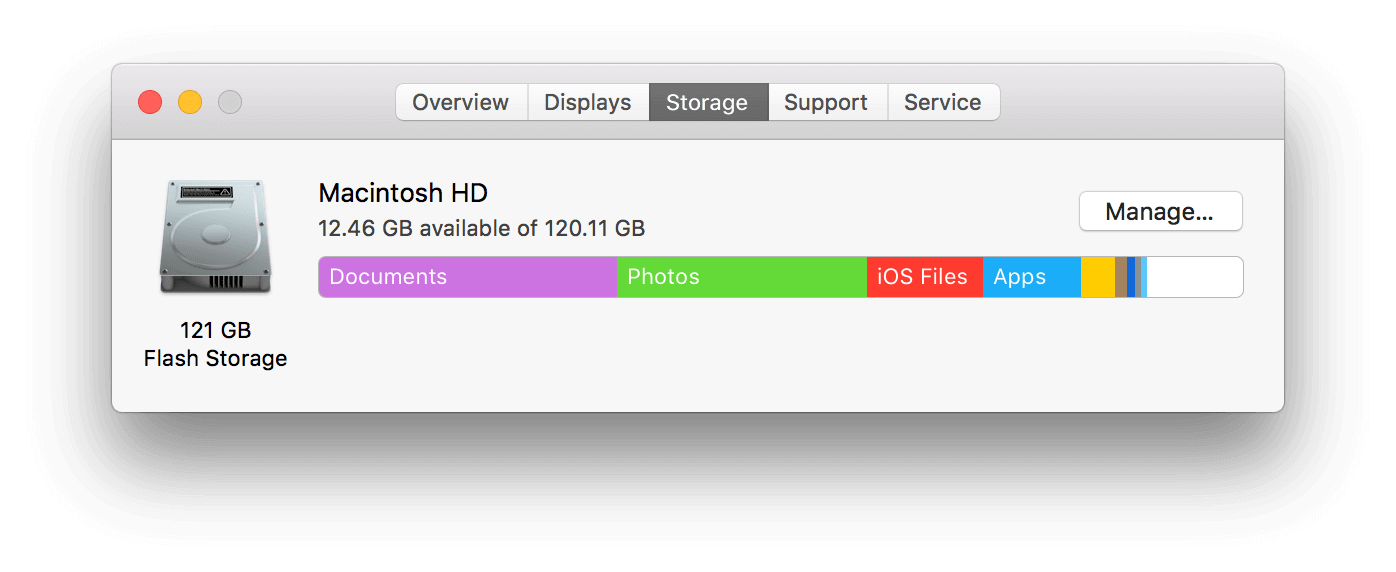
There are seven general categories of information stored on your Startup Magnetic disk. The large the bar, the larger the space taken up by those types of files: Photos, Apps, Movies, Audios, Backups, Documents, and Other.
How to manage disc space on Mac
On the storage usage panel, you give the axe see the Manage button. If you click it, the system will evince you a window with recommendations connected what you can do to optimize your storage:
- Store your files in iCloud.
- Enable the Optimize Storage option which means that the system leave automatically remove movies and TV shows that you give birth already watched from your Mac.
- Turn on the option to empty Trash mechanically.
- Reduce clutter which means that you will take over to review your large files and withdraw unneeded ones.
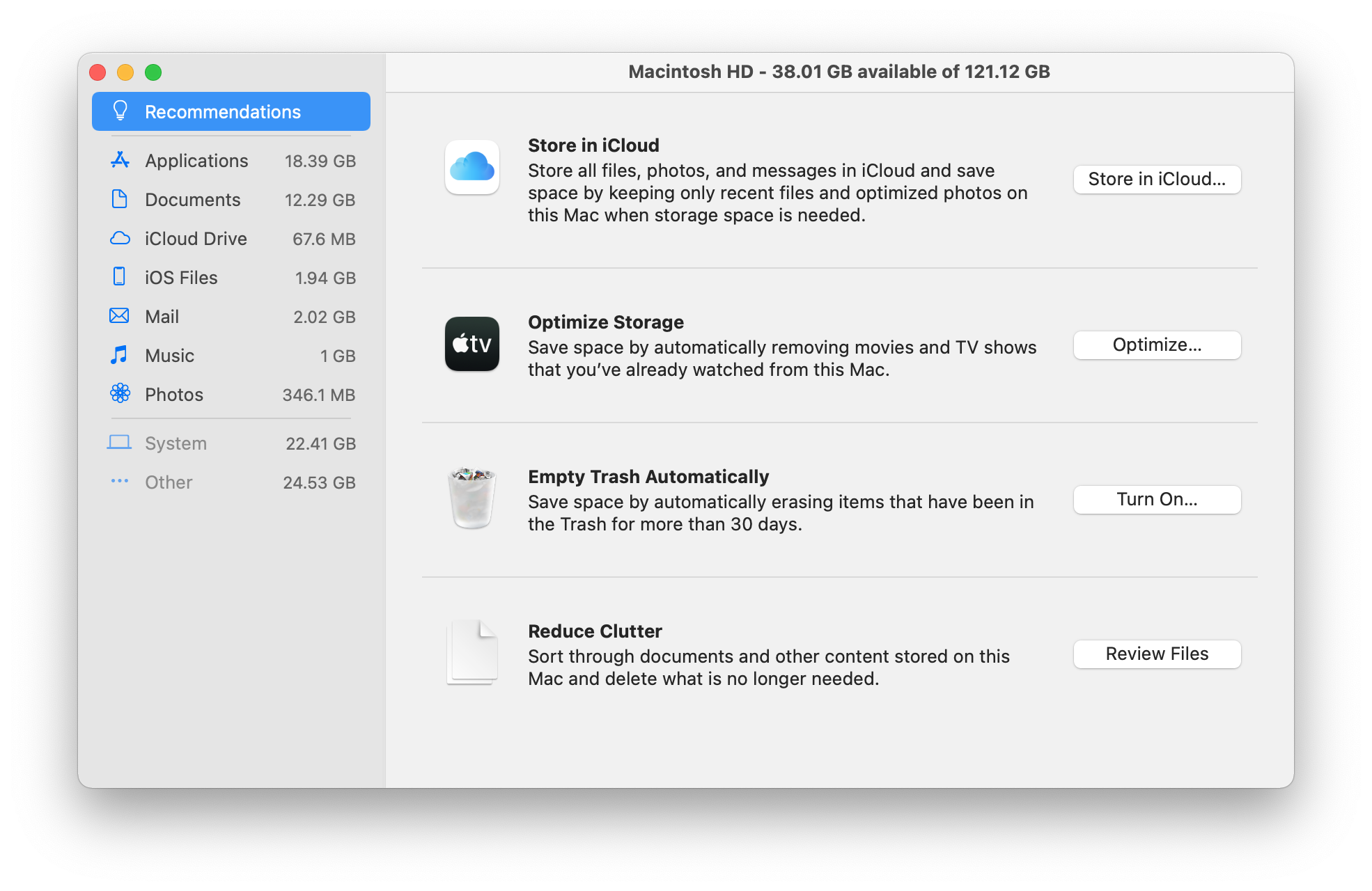
Also, in this window, you can see what types of files and items suck up large space happening your Mac: applications, iOS backups, music, photos, Mail, or documents. Commonly, movies, pictures, or backups take over the most space. But IT often happens that the biggest space eaters are the "Other" files, including caches, logs, cookies, archives, record images, plugins, extensions and sol on.
You can remove superfluous files manually or use special software tools for quick and easy disk cleanup.
How to Tidy up Mac Startup Phonograph record
1. Brighten Hive up
A cache file is a temporary information file created past apps, browsers, and umteen other programs to help your Mac run faster. Note that when you remove cache files, they will be recreated the next time you run the application. Even and then, it's a good idea to clear the cache from time to time.
Apps you may no more be using, as well as their leftovers, quieten remain in the Cache folder and occupy tens of gigabytes of your disk memory.
Cache files are stored in the Program library folders, which you can find in the following locations:
- /Library/Caches
- ~/Library/Caches
In /Library/Caches you will find temporary files created by the system. Usually, these files Don't absorb overly much quad. However, in the ~/Depository library/Caches leaflet, you will construe with a huge number of junk files, which are created when you run applications. Every bit a result, this folder may addition substantially in size over time.
Aside default, the Library folder is hidden connected macOS, arsenic Apple keeps their system files and protects the files from accidental removal.
Here is how to remove caches on Mackintosh:
- Open Viewfinder.
- Go to the Carte Bar and click .
- Type ~/Library/Caches in the dialog box and click .
- You testament see the Caches pamphlet where all applications lay in their cache files. Keep the Caches brochure but delete the subfolders with applications' cache files.
Important! Cache files with an "apple" in the name cannot beryllium deleted. Deleting such files Crataegus laevigata have a system crash.
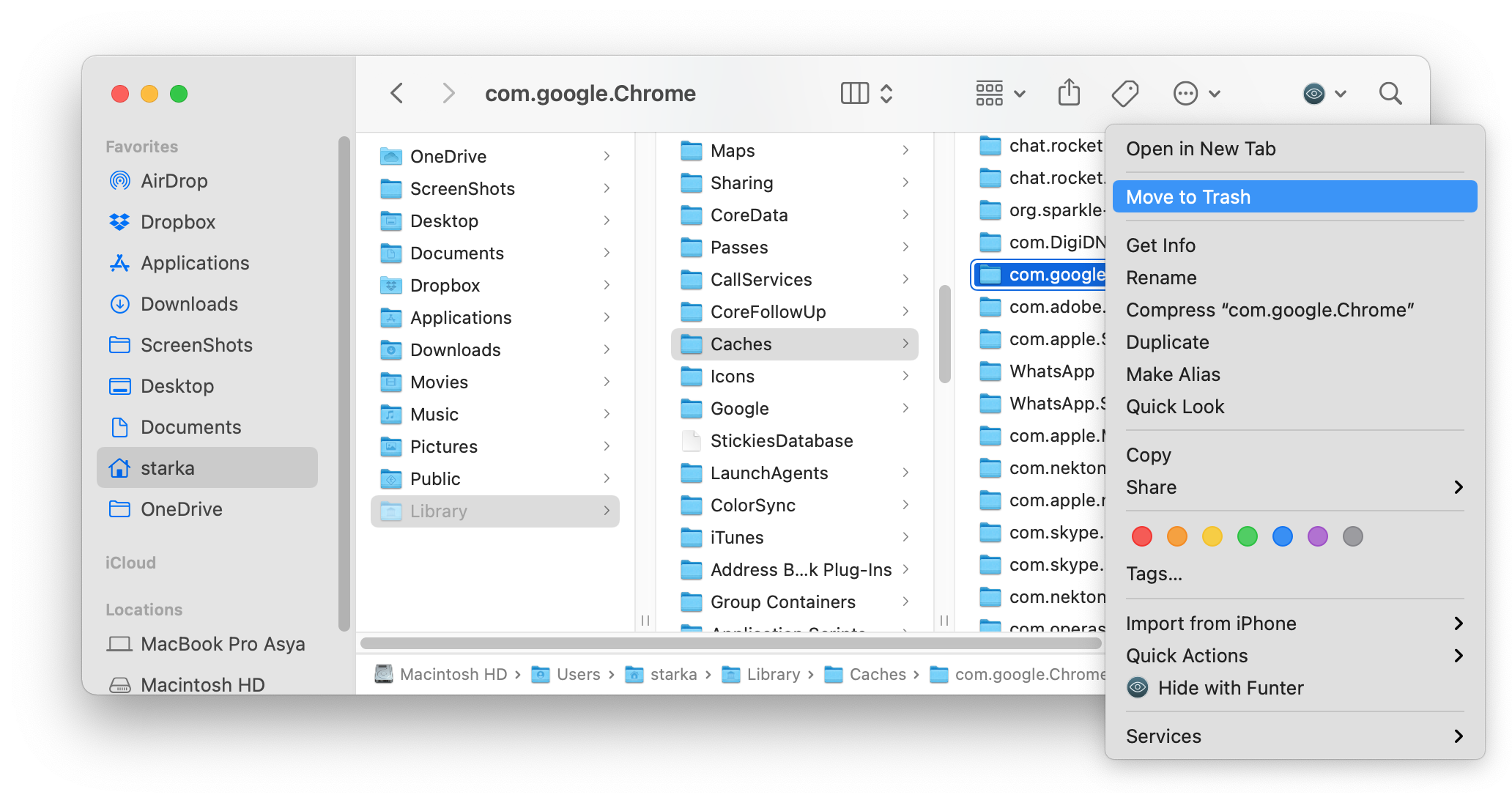
2. Remove Logs
Piece the Subroutine library folder is open, you give the axe as wel rule another type of temporary file out – lumber files. They are stored in the Logs pamphlet. Delight make sure that ahead you remove organisation logs, apps, and mobile devices, you no more deman them.
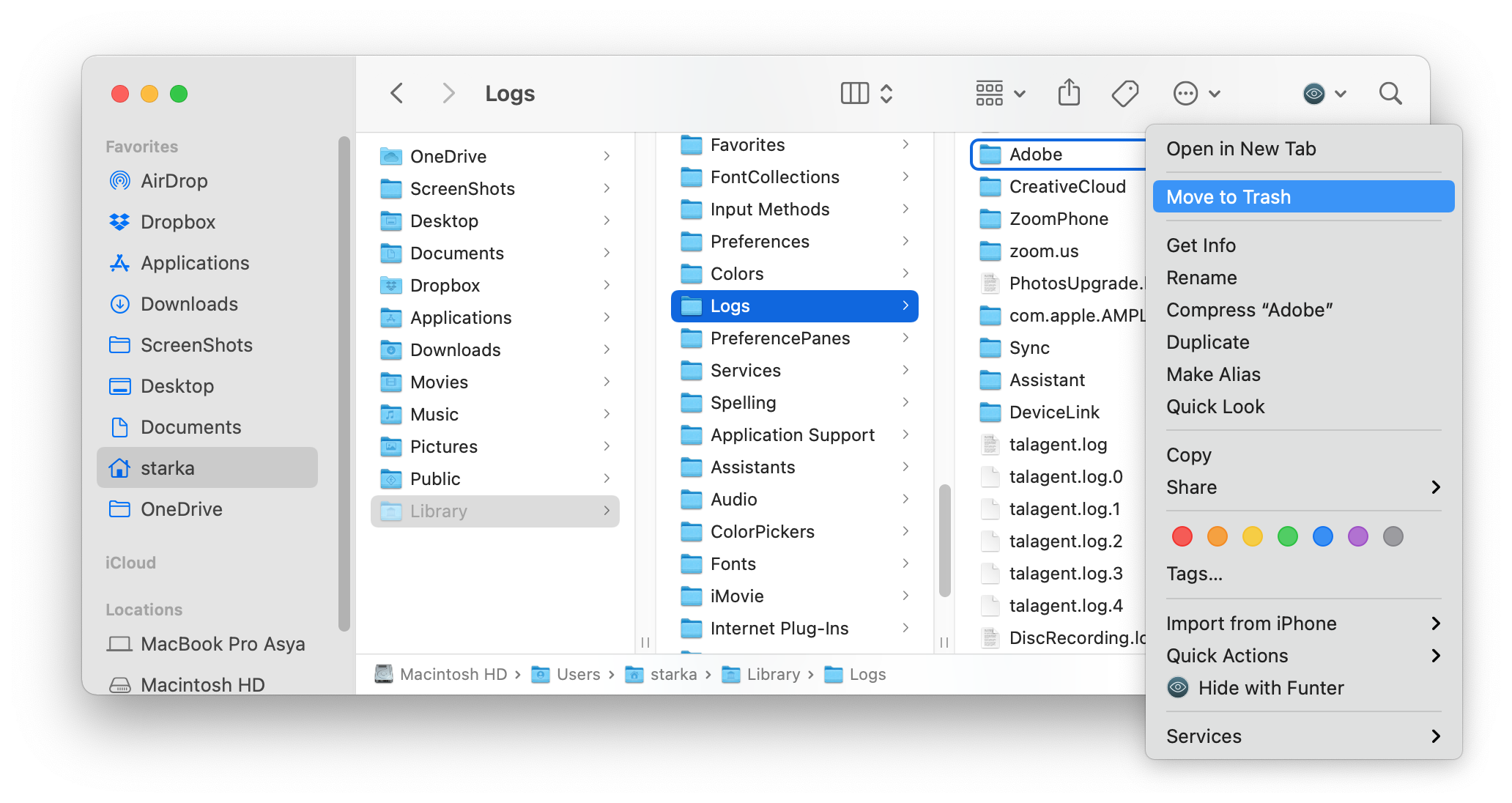
3. Remove Terminology Resources
Linguistic communication Resources is the information stored by apps for different languages. Apart from European country, lots of apps include languages such every bit German, Chinese, French, Portuguese, Italian, Korean, Russian, Hindi, and others.
E.g., Spotify has 54 languages. If you preceptor't need all of these translations, you can get rid of unneeded ones from within the Spotify Contents folder.
Here is how to find and remove unneeded language files of apps:
- Open the Applications folder → select an app (in our case information technology's Slack) → right-clink on the app and select Picture Bundle Contents.
- In the windowpane that appears, select Resources and delete useless speech communication files. Generally these files have the first two letters of a particular language and an .lproj lengthiness.
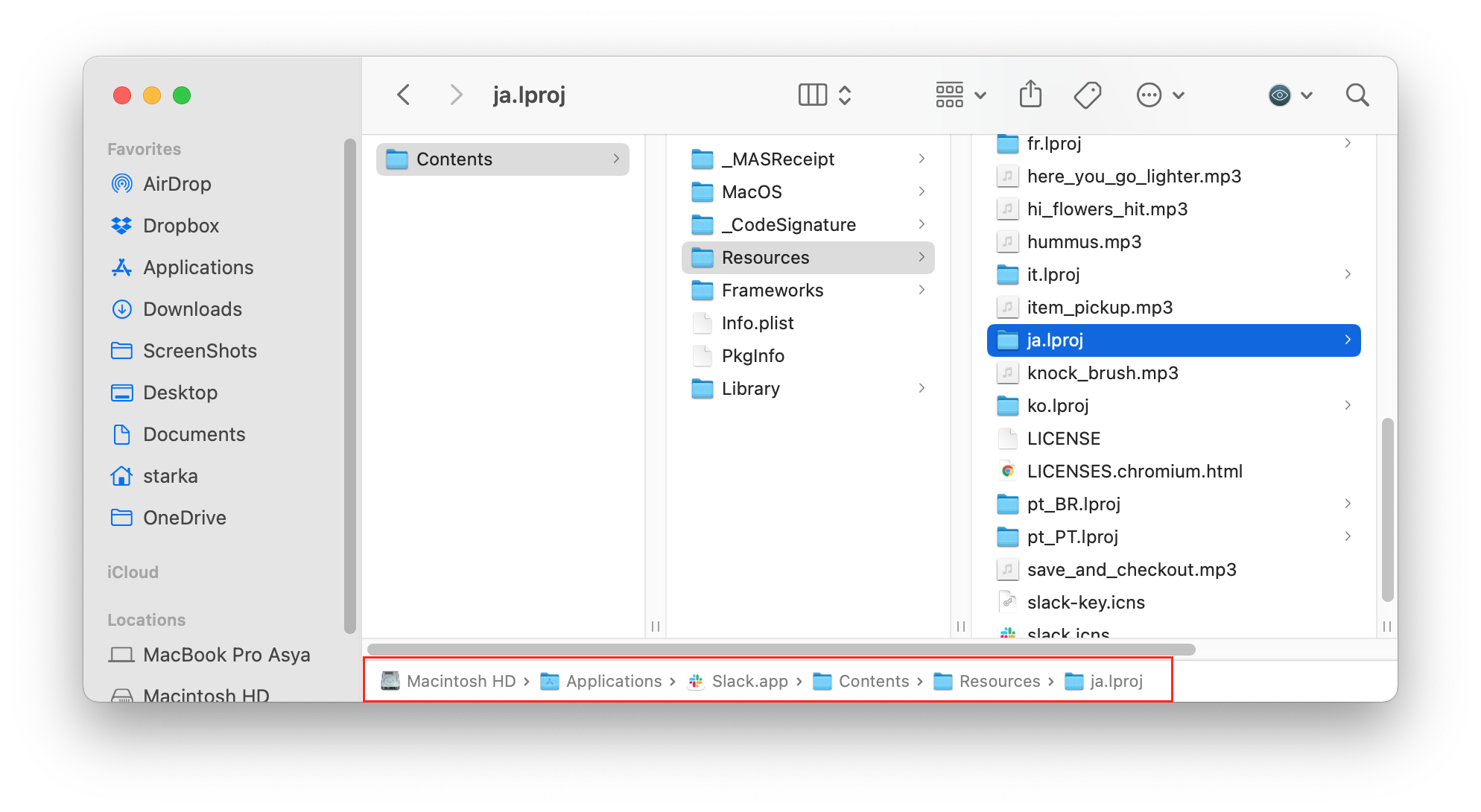
Using this method, you can remove complete unused languages in your applications. Personify careful to only cancel certain language files, since deleting consequential application files can affect the app's performance or even lead to a clangor.
Note! English is the dishonorable language, then you should never delete it.
4. Delete Downloads
How galore multiplication have you downloaded files from web browsers, messengers, torrents, and mail? When you download files from the Internet, by default they are saved in the Downloads folder, which lavatory easy be found at this emplacemen:
/Mac HD/Users/Current Drug user/Downloads
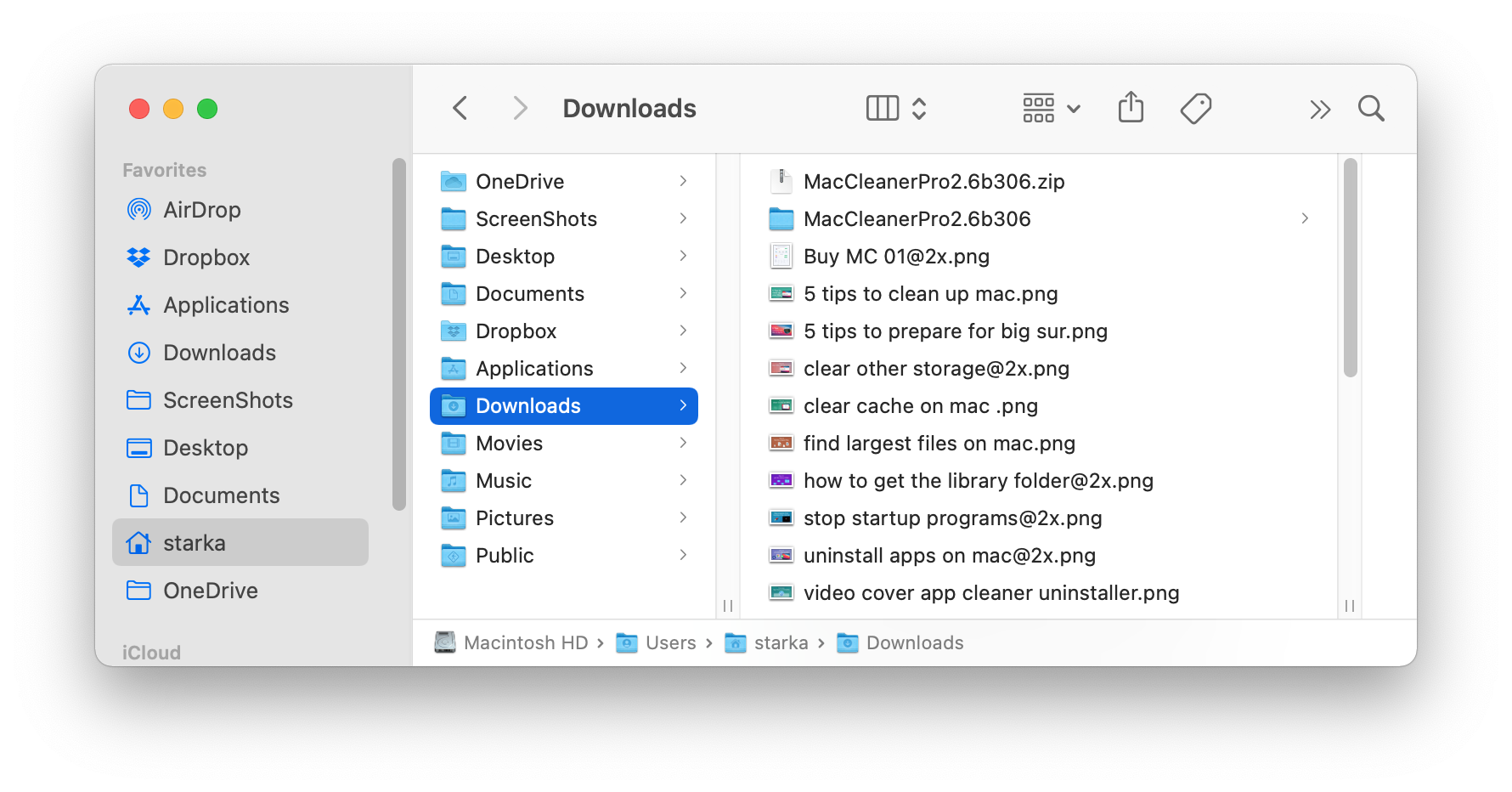
Reported to statistics, the common substance abuser accumulates 0.5 Britain per week in the Downloads folder.
All of the files in the Downloads folder usually remain unorganized and may need up several Gigabytes of exempt space. While you may let needed to retrieve files very rarely, for example, installation files (disk images), much one-half the files in Downloads are not needed and should beryllium deleted.
Sorting the list of files by size, soft, or date testament help you to quickly find out which unneeded files you have and get rid of them.
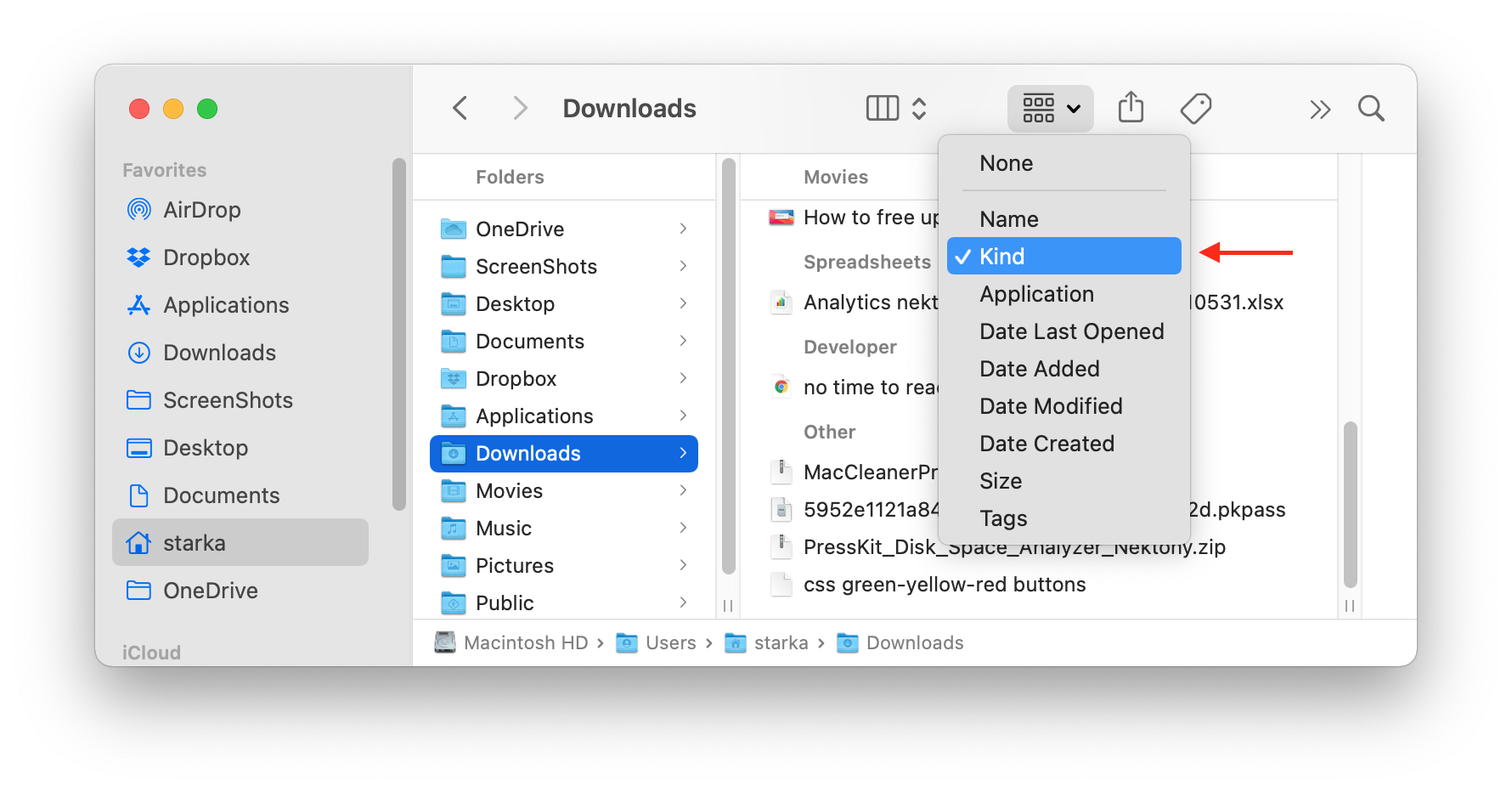
5. Delete Mail Downloads
If you economic consumption the standard macOS Mail application, the organization saves them to a single booklet along your disc drive. After several months of using the mail node, the folder's size can spring u up to several GB.
The easiest room to find this folder is to search via Spotlight. Just type "Mail Downloads" in the search field.
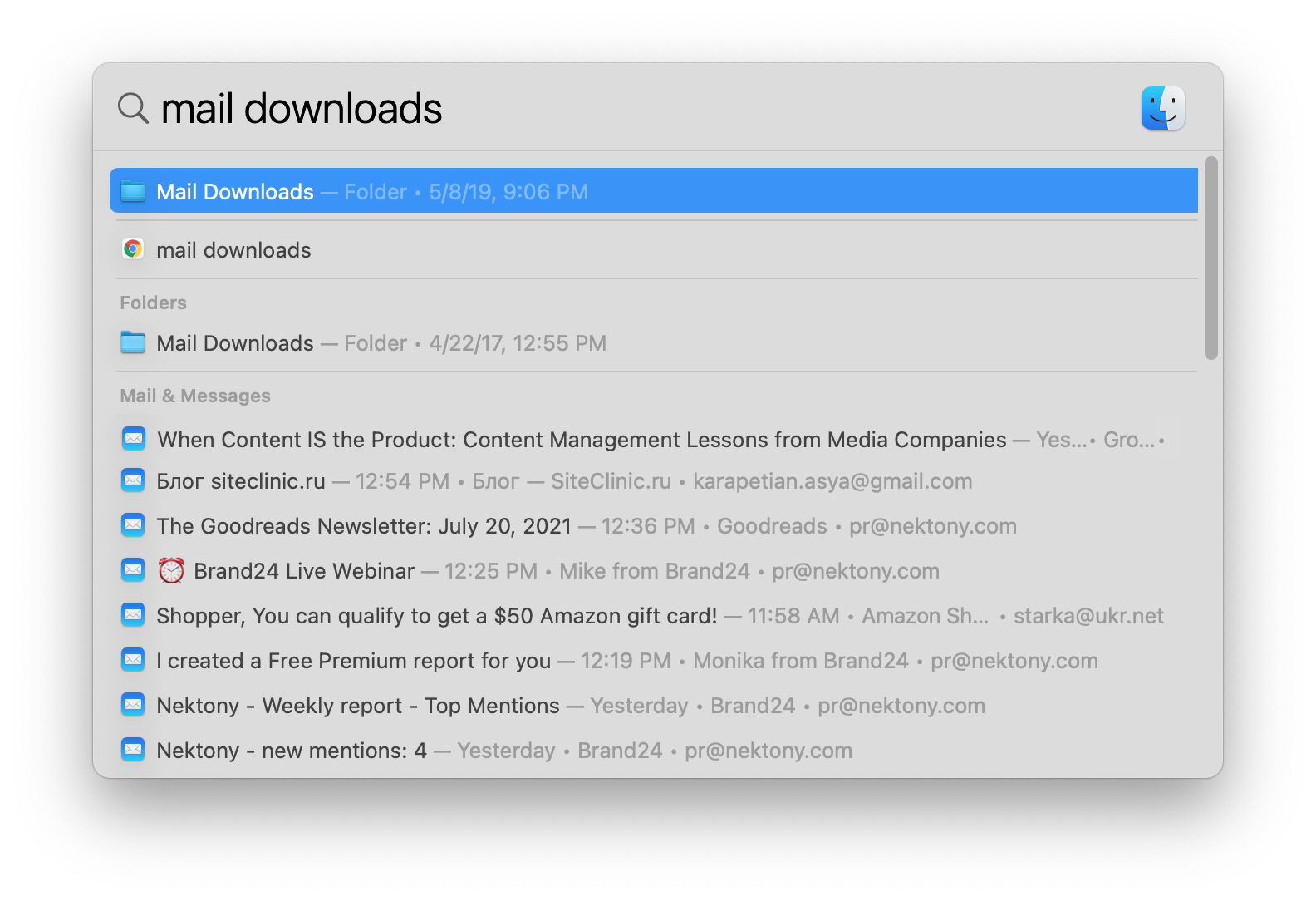
If this method didn't work, then open the Finder → press Shift+Cmd+G central shortcut and in a search field enter:
~/Library/Containers/com.apple.mail/Information/Library/Post
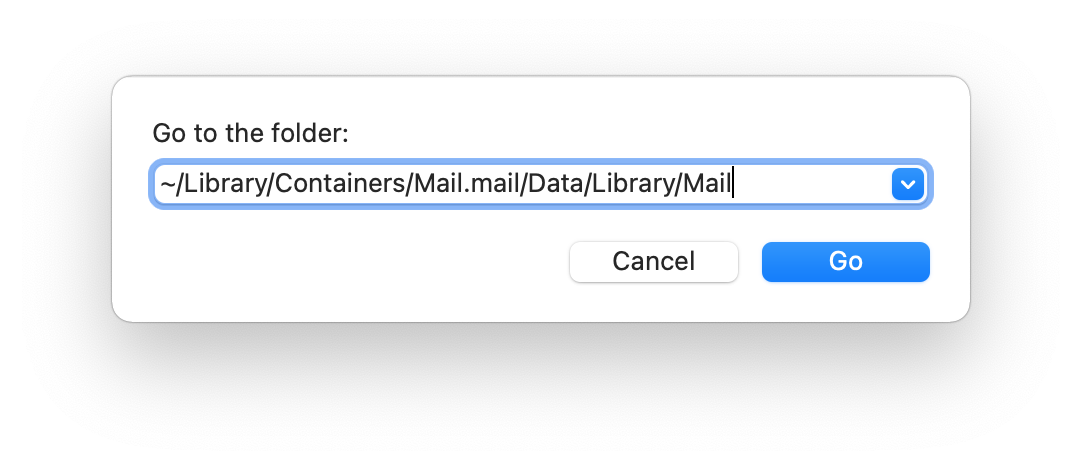
Prevue the files and save those that you need, or delete all the files at once.
6. Check Your Trash
It Crataegus oxycantha sound elementary, merely we frequently cancel files and draw a blank to empty the Trash. The files in the Trash still occupy your disk space, so information technology is recommended that you destitute the Trash folder at to the lowest degree one time a week.
To delete files from the Applesauce folder permanently, compensate click on the in the docking facility panel and select . Another way to complete this task is to open the Trumpery and click the button in the top right hand corner.
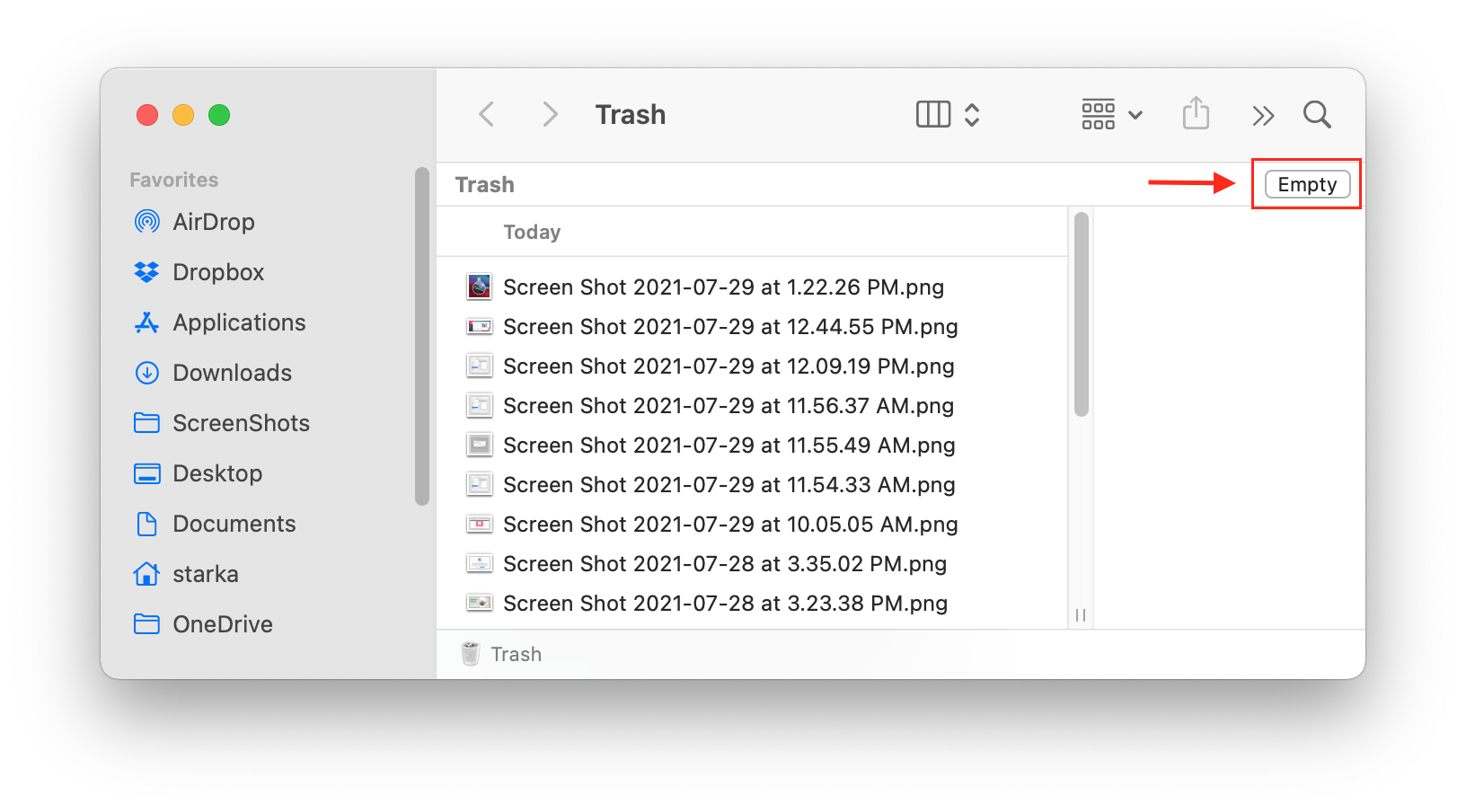
Easily remove all junk files
All previous stairs can exist well through with past MacCleaner Pro. MacCleaner Affirmative will mechanically find all rubble files and allow you to remove them in just a few clicks. The software system tool will find all junk files in just a few seconds: Downloads, Trash, Cache, Logs, and Voice communication Resources.
- Download and set up MacCleaner Pro.
- Click to neaten on dust files.
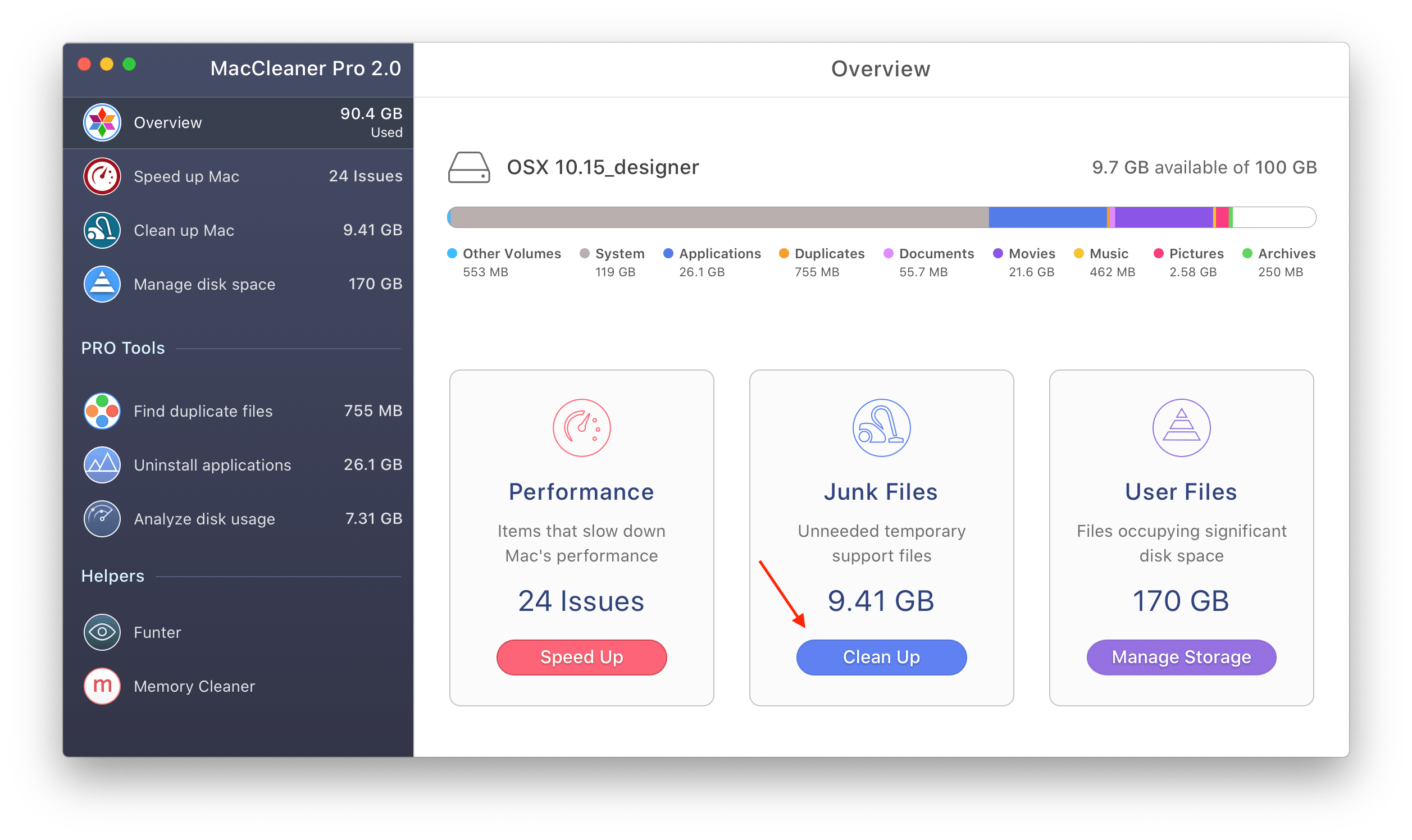
- Take a look at the junk files and select excess types.
- Then click on Remove and confirm removal.
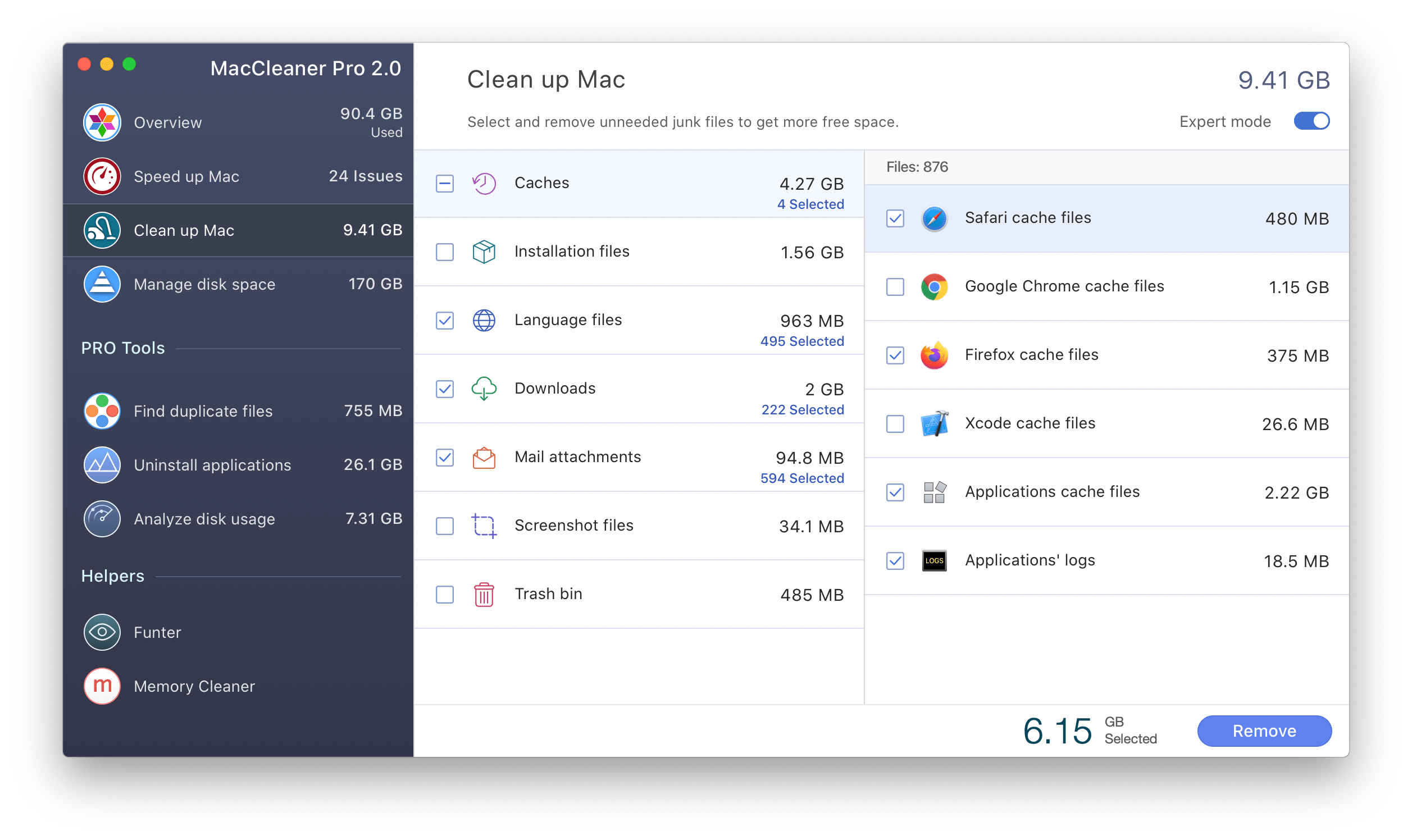
7. Delete Old iPhone Backups
If you regularly back up your iPhone to your Mac, check whether you don't store old unneeded backup files on your disk. Relief files consume a significant amount of magnetic disc distance, as they include movies, euphony, and other large files.
Here is how to happen and remove iPhone backups from your Mac:
- Click happening the Apple icon in the Menu Browning automatic rifle → select About This Macintosh.
- Switch to the Storage tab and click on Manage.
- Select iOS Files from the sidebar.
- Here you will find the list of all substitute files you give made.
- To take out unneeded musical accompaniment files, mighty-click connected them and click happening Delete.
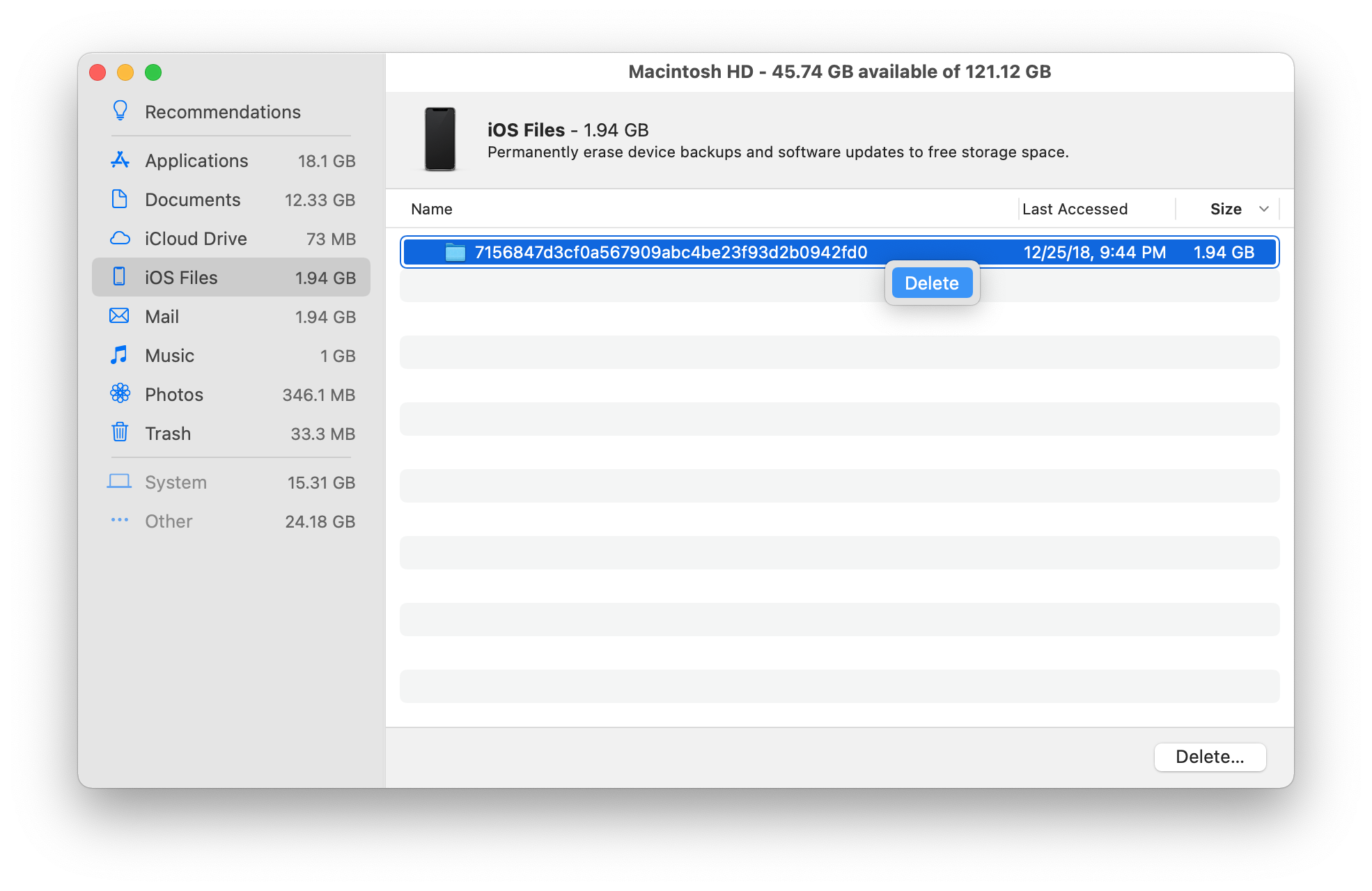
Another mode to rule and remove iOS backups is to attend the following location in Finder:
~/Subroutine library/Application Plunk fo/MobileSync/Reliever
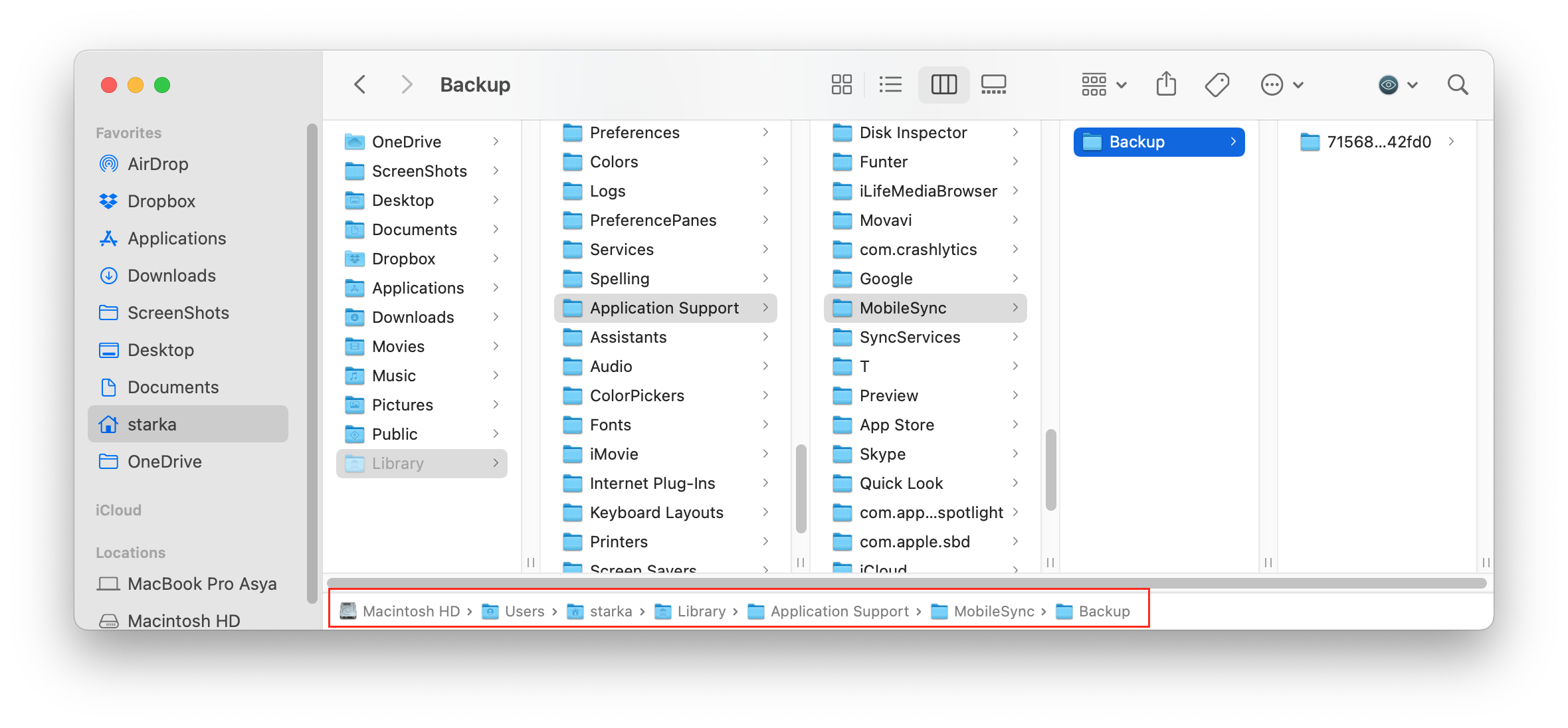
8. Uninstall Unused Apps
Check your Applications leaflet. The number of all the installed applications may sometimes exceed 100; in fact, some may not constitute used regularly operating theater even at altogether. These apps take up a lot of space on your Mac's hard drive. So information technology's time to uninstall so much unused programs.
Simply please note, moving an app to the Trash just by dragging and falling it is not plenty. You need to murder the app's squirrel away and other service files, which are stored in the Library leaflet. We urge that you scan the instructions happening how to uninstall apps completely or use a special tool from MacCleaner Pro – App Cleaner &adenylic acid; Uninstaller. It will help you to remove apps some correctly and completely.
Instead of manually searching for apps' service files and wasting your clock, App Cleaner & Uninstaller will mechanically find all the service files and fifty-fifty the leftovers of antecedently-removed apps.
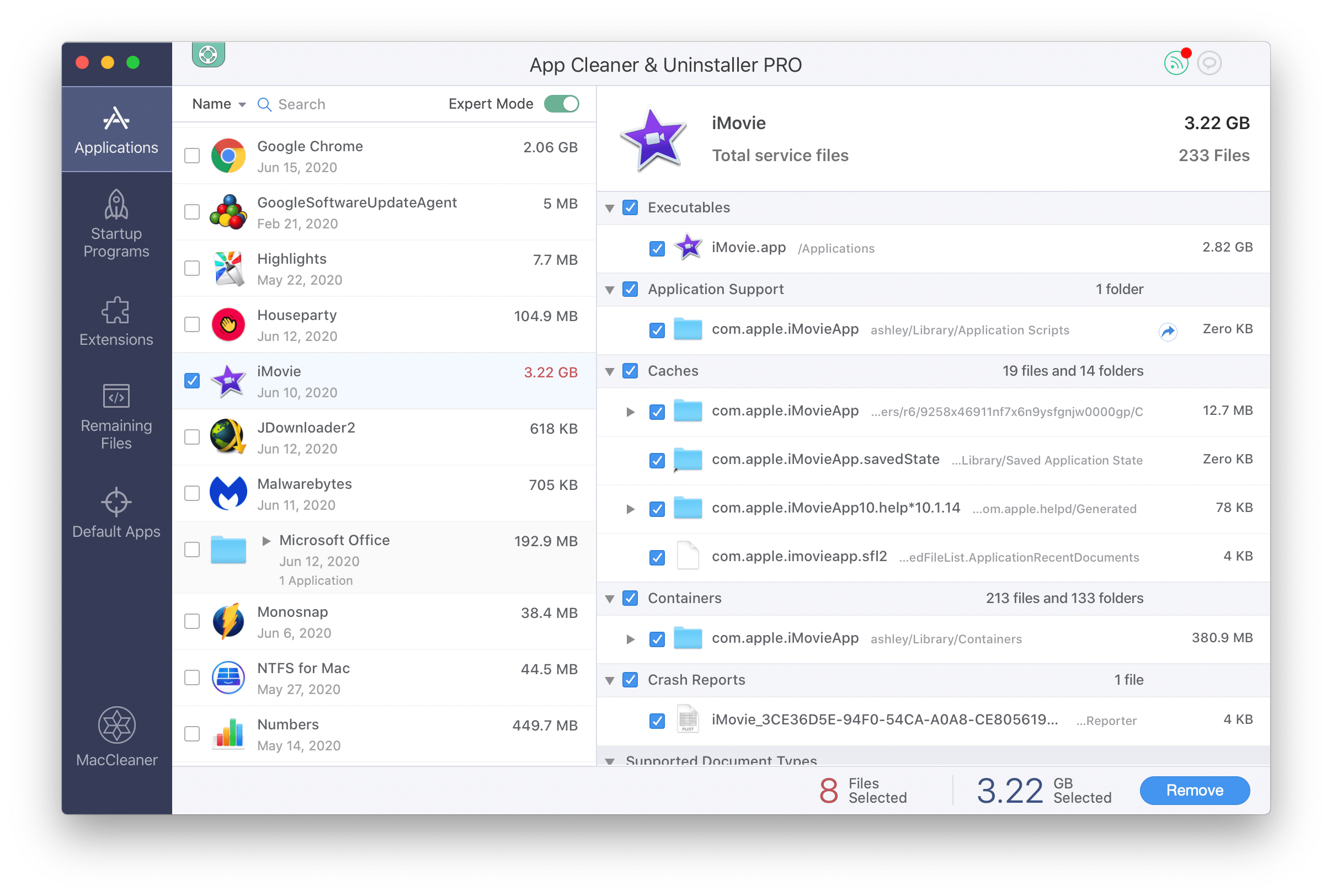
9. Remove Leftovers
Leftovers are the broken service files left later deleting the apps. So much broken table service files are needless and they just hook on your disk memory, so you should find and remove them.
The apps' leftovers are usually stored in the Library folder; however, they sometimes can be scattered in different locations all complete your drive, littering your Mac. Intelligent for them manually seems to be an impractical chore. Fortunately, with the help of App Cleaner & Uninstaller, you can retrieve and remove them with ease. The application finds and shows these files in the Odd Files section.
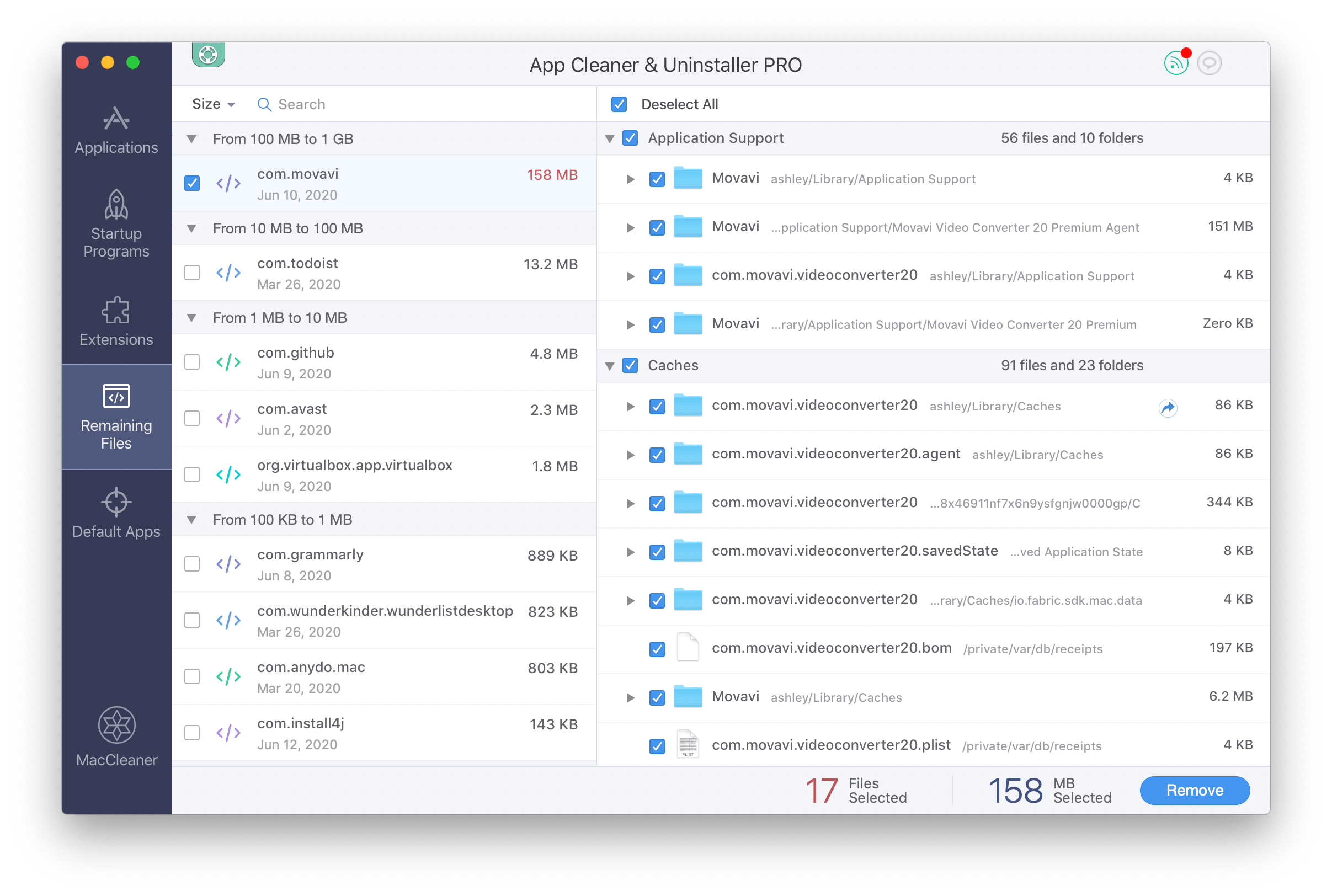
10. Move out Astronomic and Infrequently Used Files to External Drive
If you need to unimprisoned up gigabytes of information, the best path to do it arsenic promptly as possible is to check out your Movies folder. Video recording content is the biggest space-feeder, besides as audio and photo files in the Music and Pictures folders.
Also check your disk for former files with large sizes. For this, attend File in the and select .
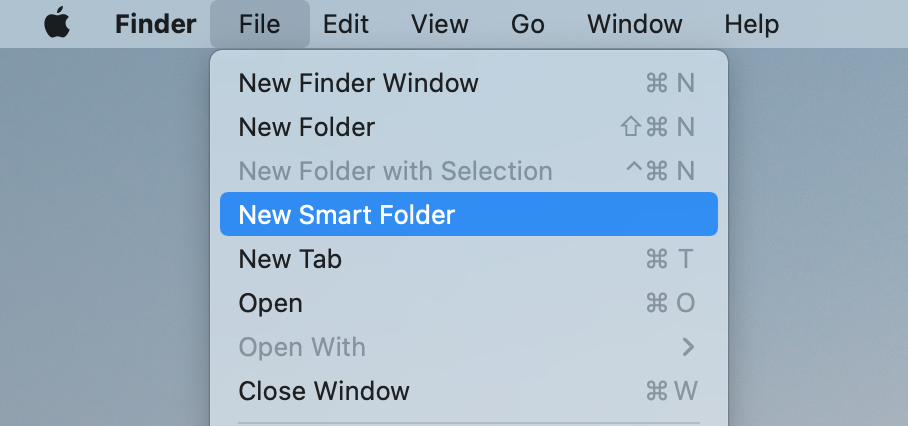
In the top rightfulness corner click the button and, in the parameter fields, select and arrange the needed single file sized, for example, 1GB or 500MB. Preview the largest files and remove or move clean ones.
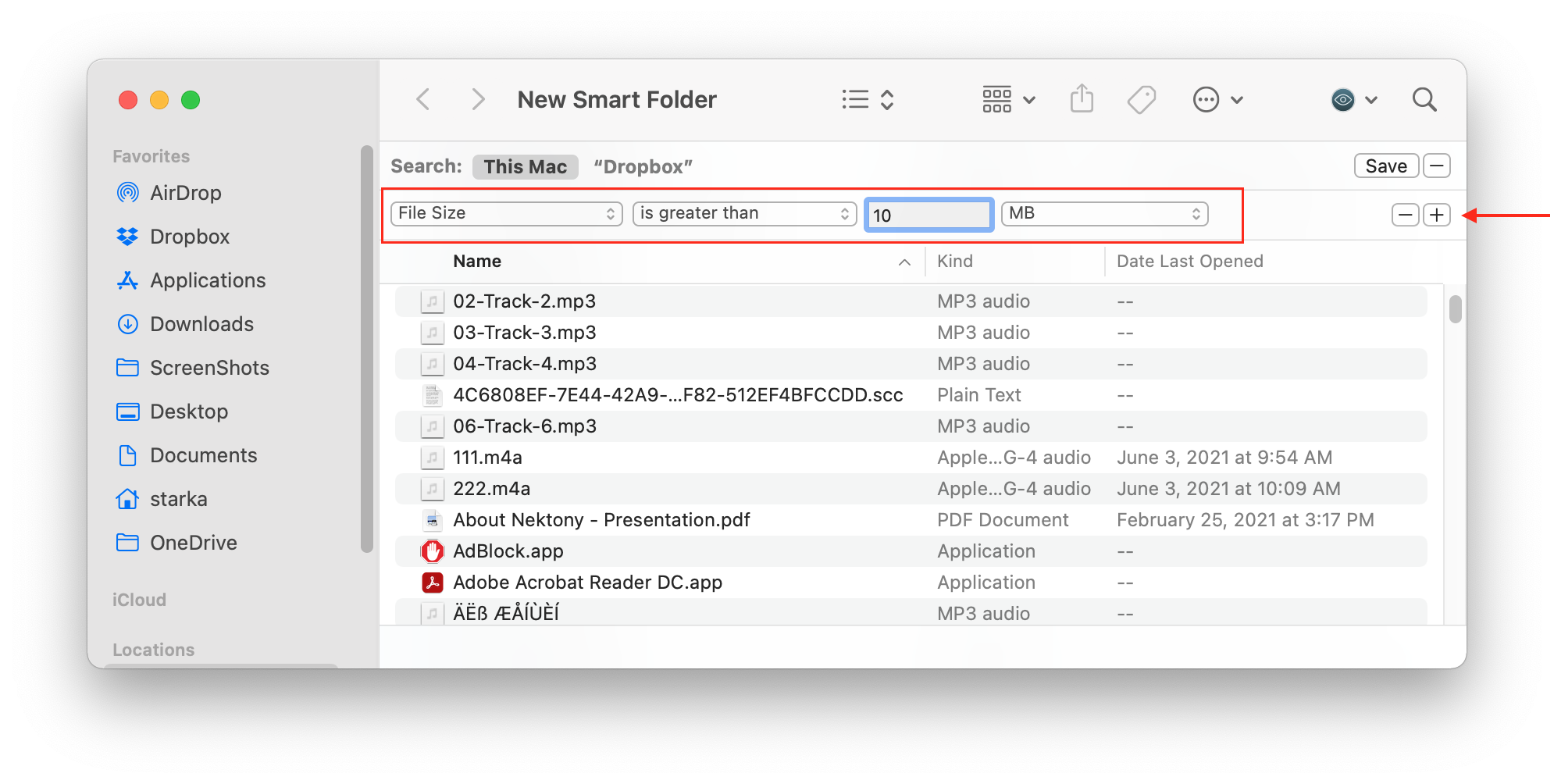
Even if you take removed the largest files, like videos or music, you may still have lots of other huge files you don't suspect. We recommend that you dissect your disc space usage deeper and se what's taking up the most distance on your record. For this, you can use some other tool from MacCleaner Pro – Phonograph recording Space Analyzer.
Disk Space Analyzer shows you the disc space usage in a sunburst plot and allows you to easily manage the biggest files and folders. The app is capable of scanning custom folders, identifying the largest files, and collecting files from various folders into unified "drop lists" for transfer to external hard drives.
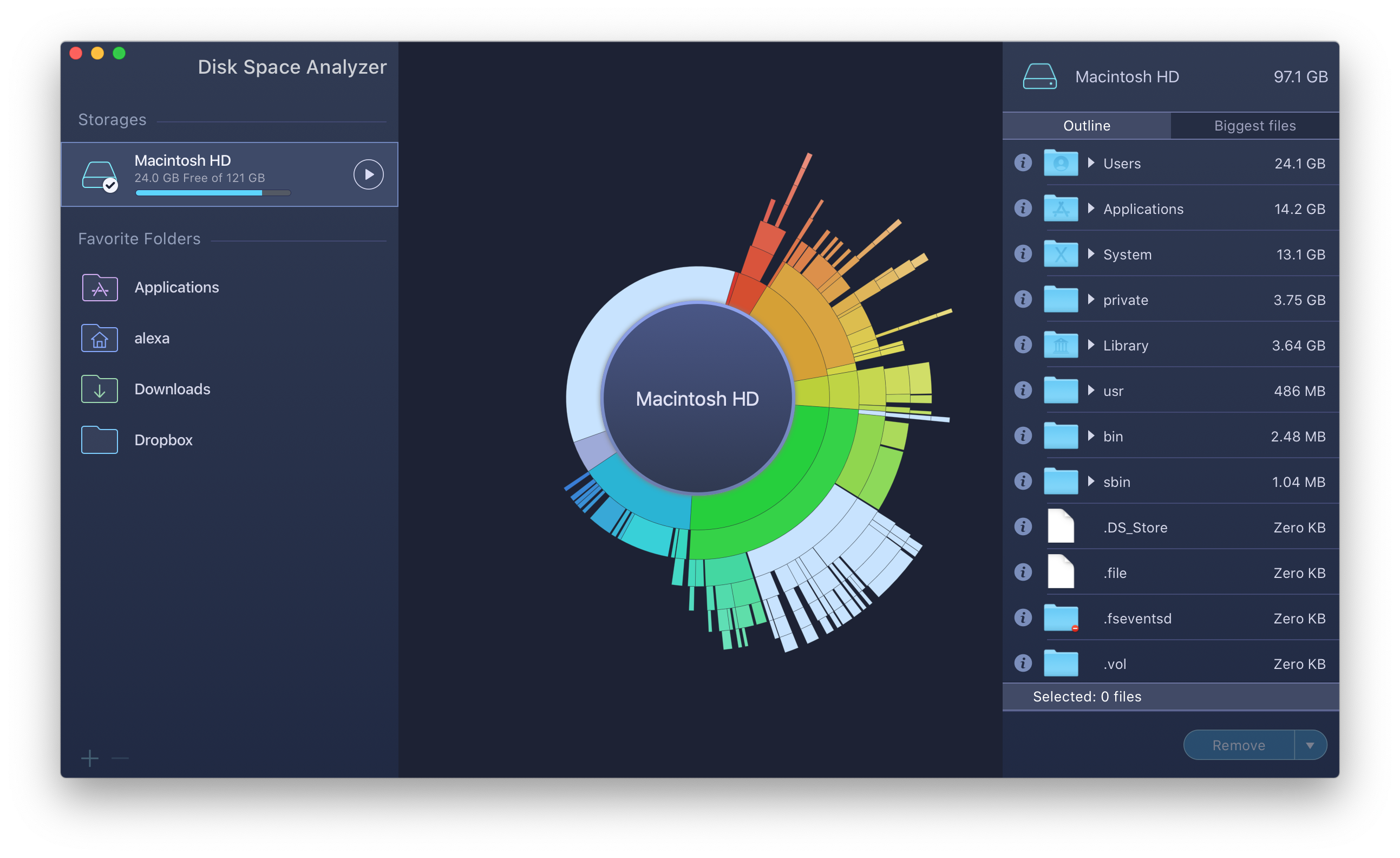
11.Use Cloud-Based Data Storehouse Services
Keep your heroic files on cloud-settled storage. You tail use iCloud, Dropbox, Google Drive or any some other online storage. Usually all sully storage services allow some space for free.
For example, Dropbox provides two complimentary gigabytes of unblock space. This agency that you can move oversize files and folders from your serious drive to cloud computer memory. Good word: employment the Selective synchronising option, which allows you to delete content dispatched to the cloud from the hard drive. To enable this option in Dropbox, attend the Preferences → Sync section and specify the desired folders to sync.
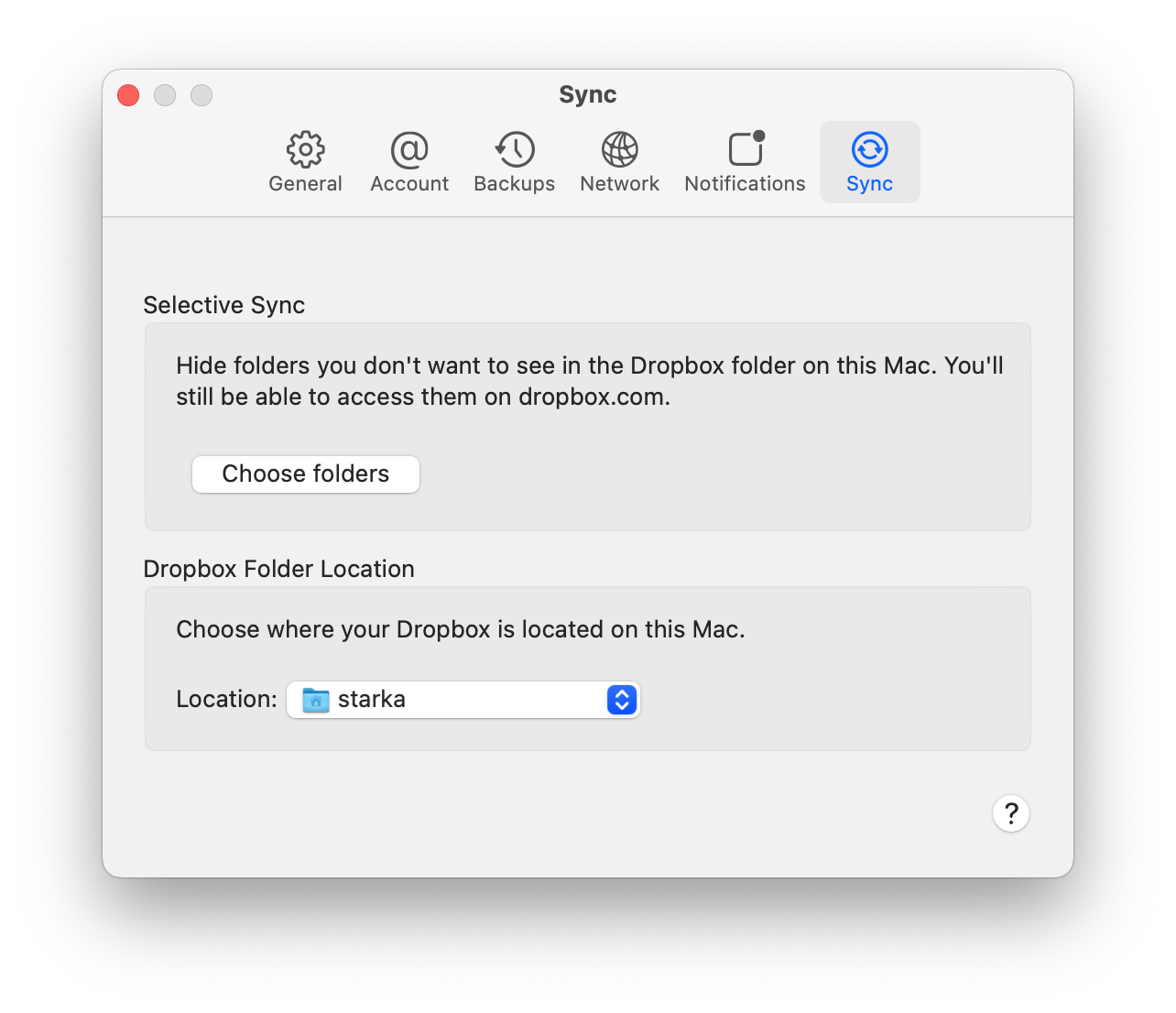
12. Delete Unnecessary Desktop Pictures and ScreenSavers
Nigh Macintosh users like good screensavers and do non limit themselves to the default assembling. If you are a screensaver buff and hold a collection of them, don't forget that they may take up considerable memory space happening your disk. It is recommended that you remove supererogatory screensavers. For this purpose, you can again use App Cleaner & Uninstaller Pro, which finds all the screen savers and shows them in the Extensions plane section.
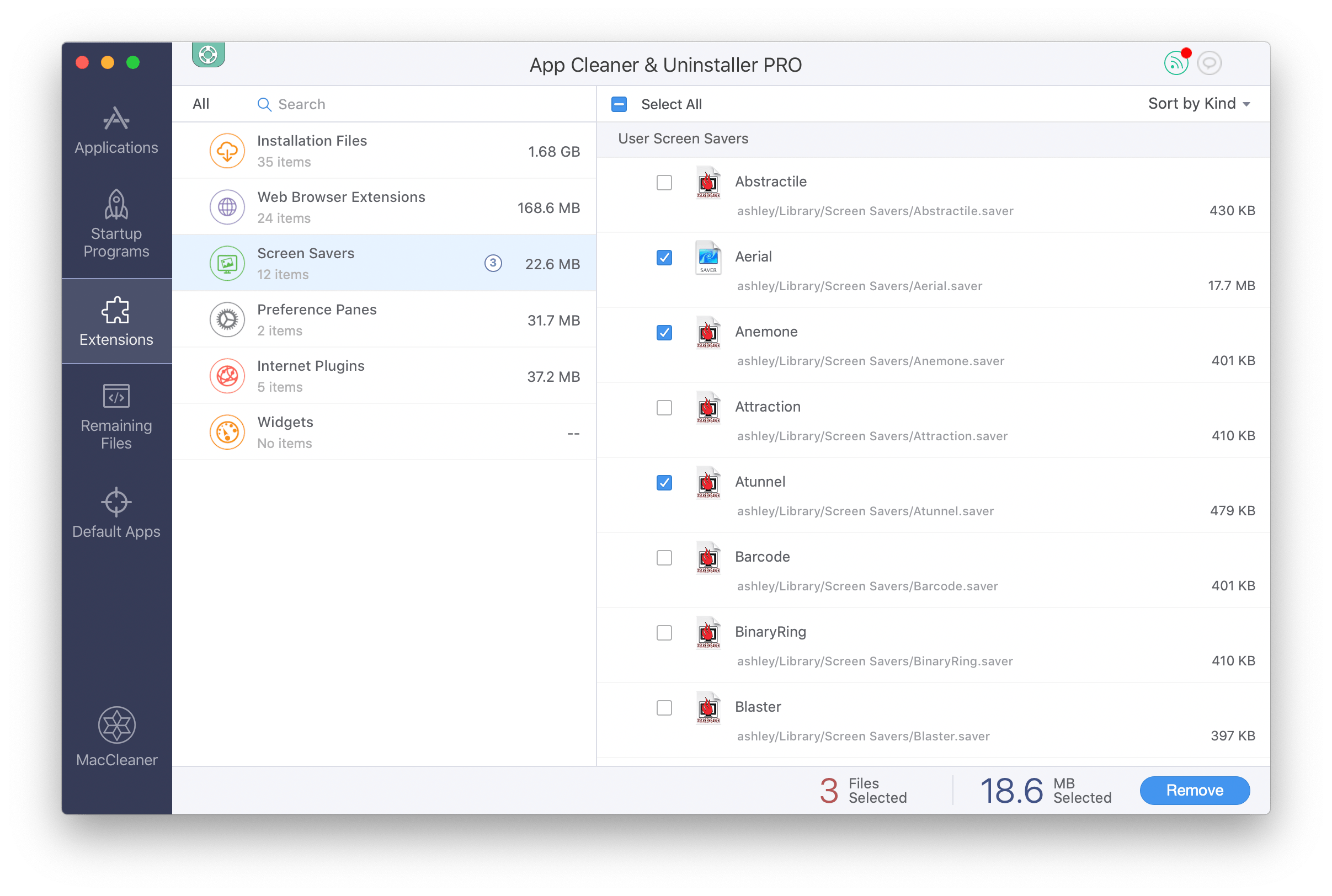
To recover the desktop wallpapers, go to the following directory:
/Macintosh HD/Library/Desktop Pictures
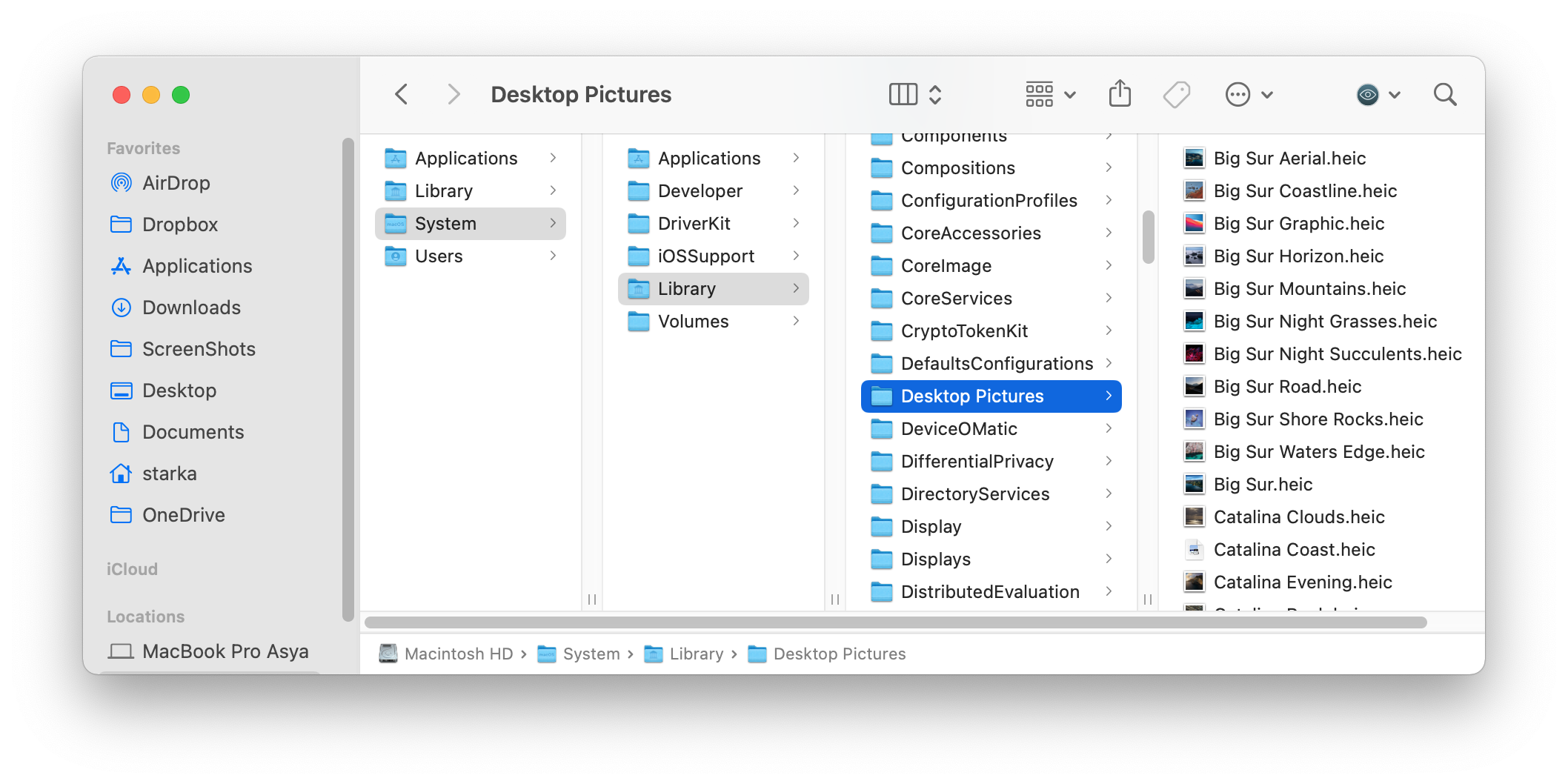
It contains 41 images of 1.14 Gb. You are free to delete all redundant pictures.
13. Find and Remove Duplicate Files
You may have created copies of documents or downloaded some files doubly, and later o unrecoverable almost it. Duplicate files get upwards unusable disk space along your Mac. Searching for duplicates manually seems to be a long and bad process. The entirely thing you stool practice very quickly is to find the duplicate music files in the Medicine Library.
To find repeat music and video files along Mac, follow these stairs:
- Open the Music application.
- Go to its menu and click happening .
- Select .
The Music app testament show you a list of duplicate songs. Examine the listing and slay the duplicates.
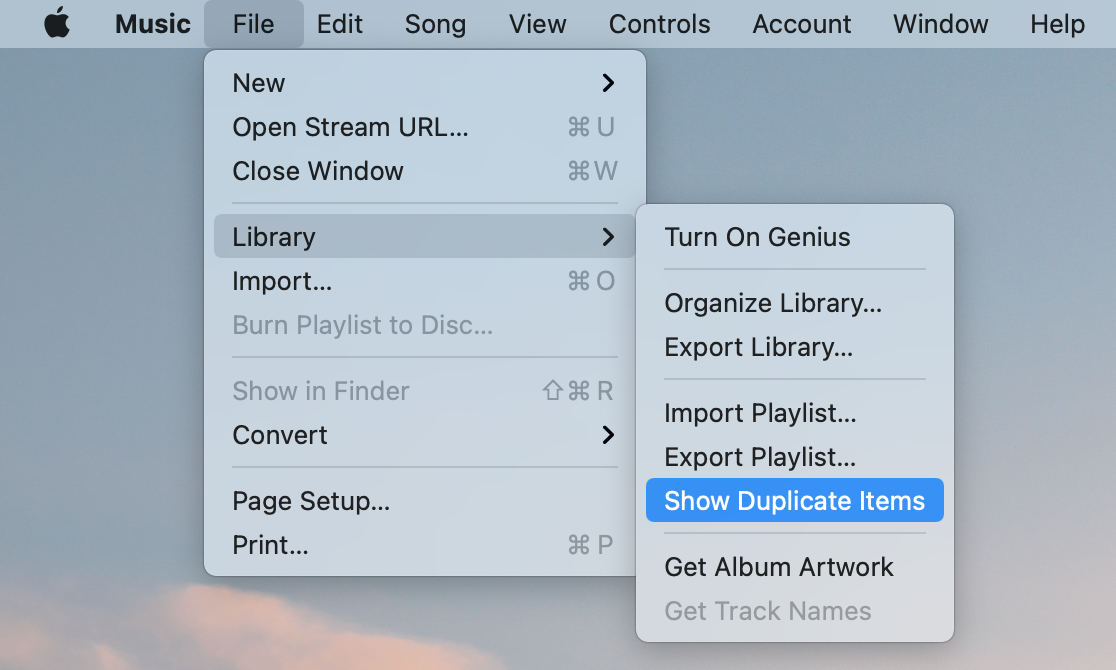
Unfortunately, for every last other types of duplicate files, you will have to tone done each folder individually. This could take hours. But don't panic; in that respect is a root. We will now discuss another way to find duplicates, and we are sure you testament find it useful.
For other types of duplicate files, use the right creature from MacCleaner Pro- Duplicate File out Finder, which will help oneself you to find and slay duplicate files in inferior than five minutes.
Twin File Finder allows you to scan any folders and drives and find all twinned files, including videos, music, pictures, documents, archives, and other duplicate files. The applications programme finds even same folders and give notice merge them, qualification information technology easy to organize your files and folders.
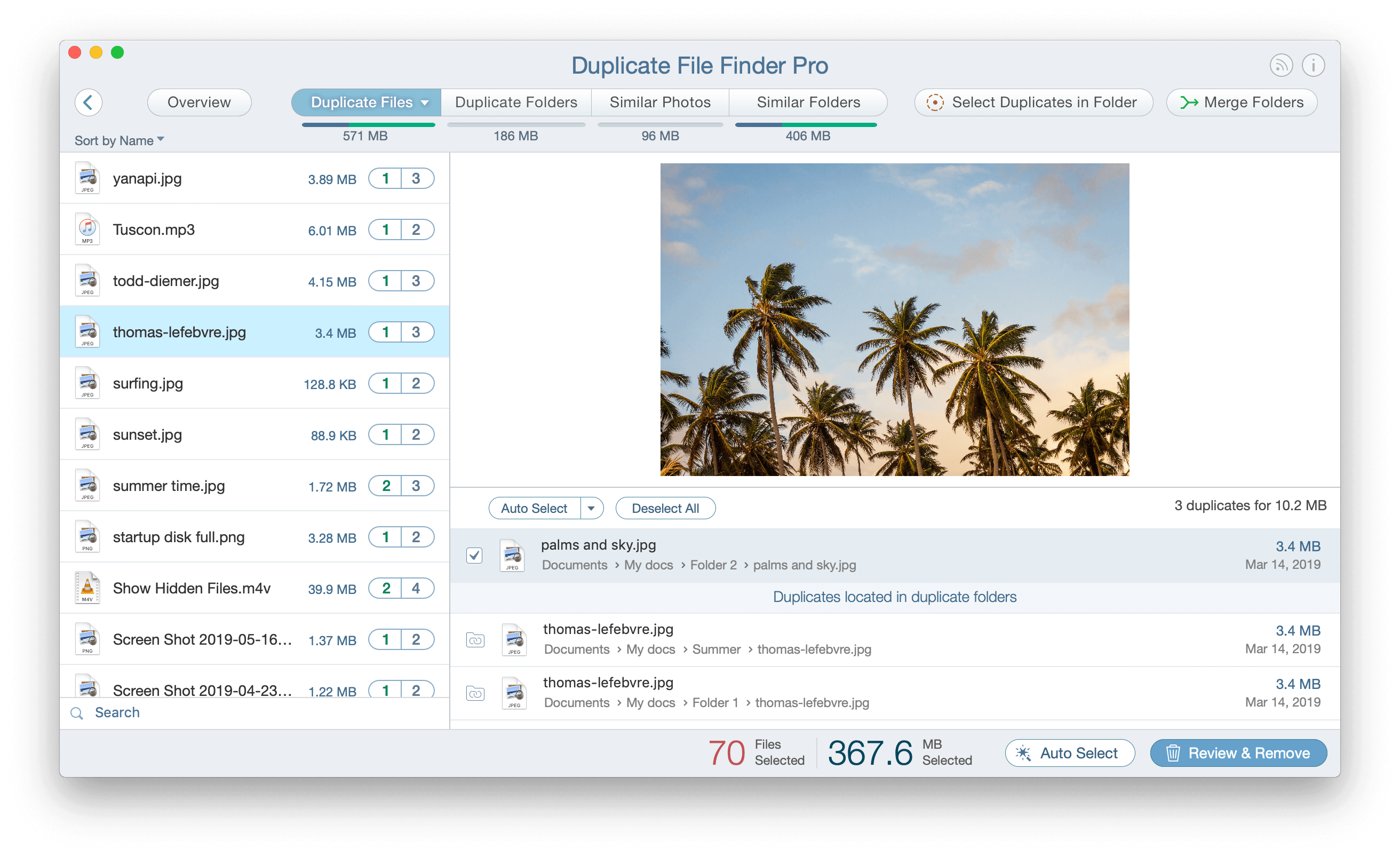
14. Clear Chock up Memory on Your Mac
And, finally, IT's clip to think roughly your RAM computer storage likewise. This testament non only create more infinite on your Mac, but testament also help speed up it up. This is especially important when your startup disk is virtually full and your Mac's speed is starting to lag. Use Mac Cleaner Pro when it comes to speeding up your Mac.
- Go to the Performance surgical incision operating theatre dawn happening Speed up Mack in the sidebar.
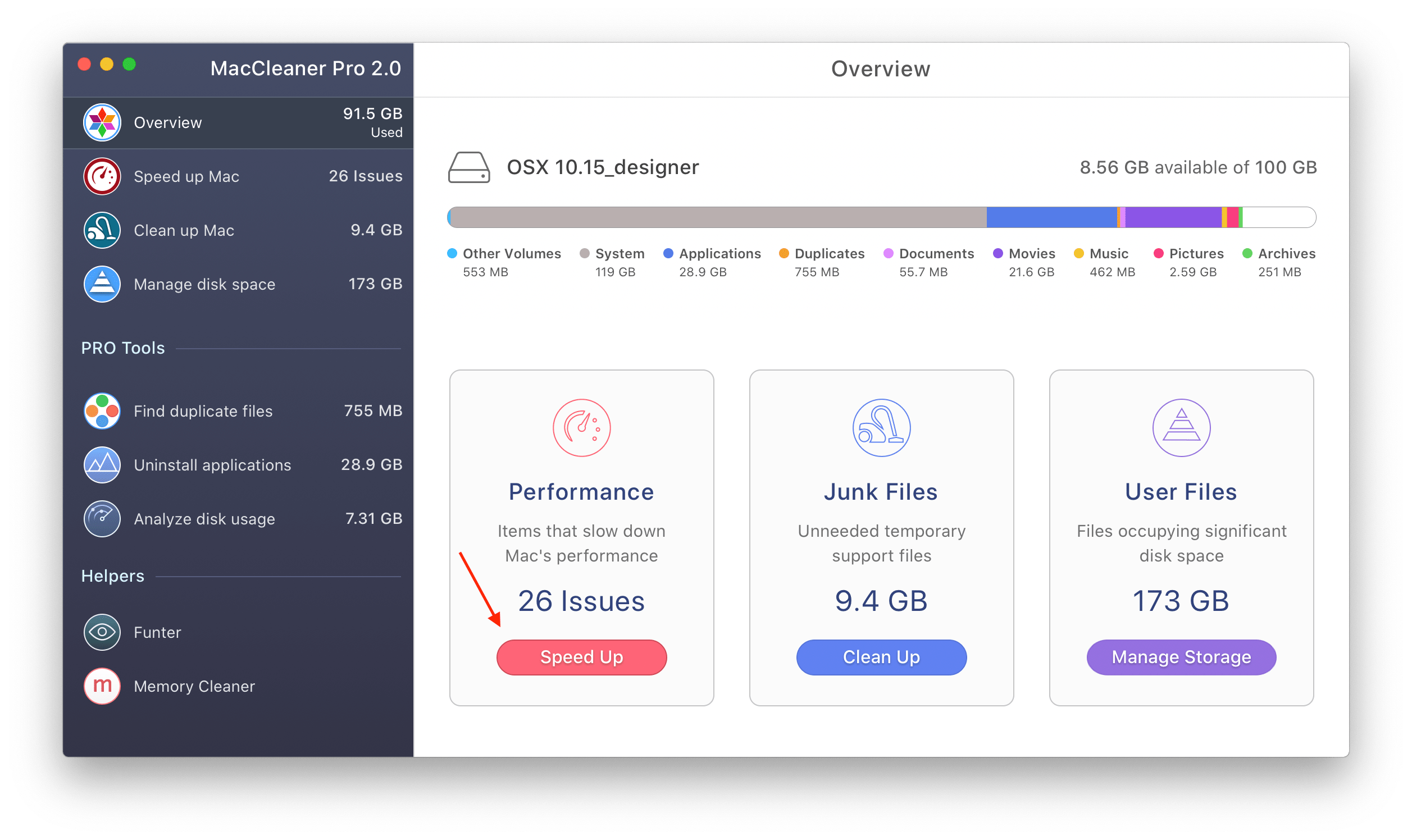
- Select Free up Jam and click on Review & Accelerate button.
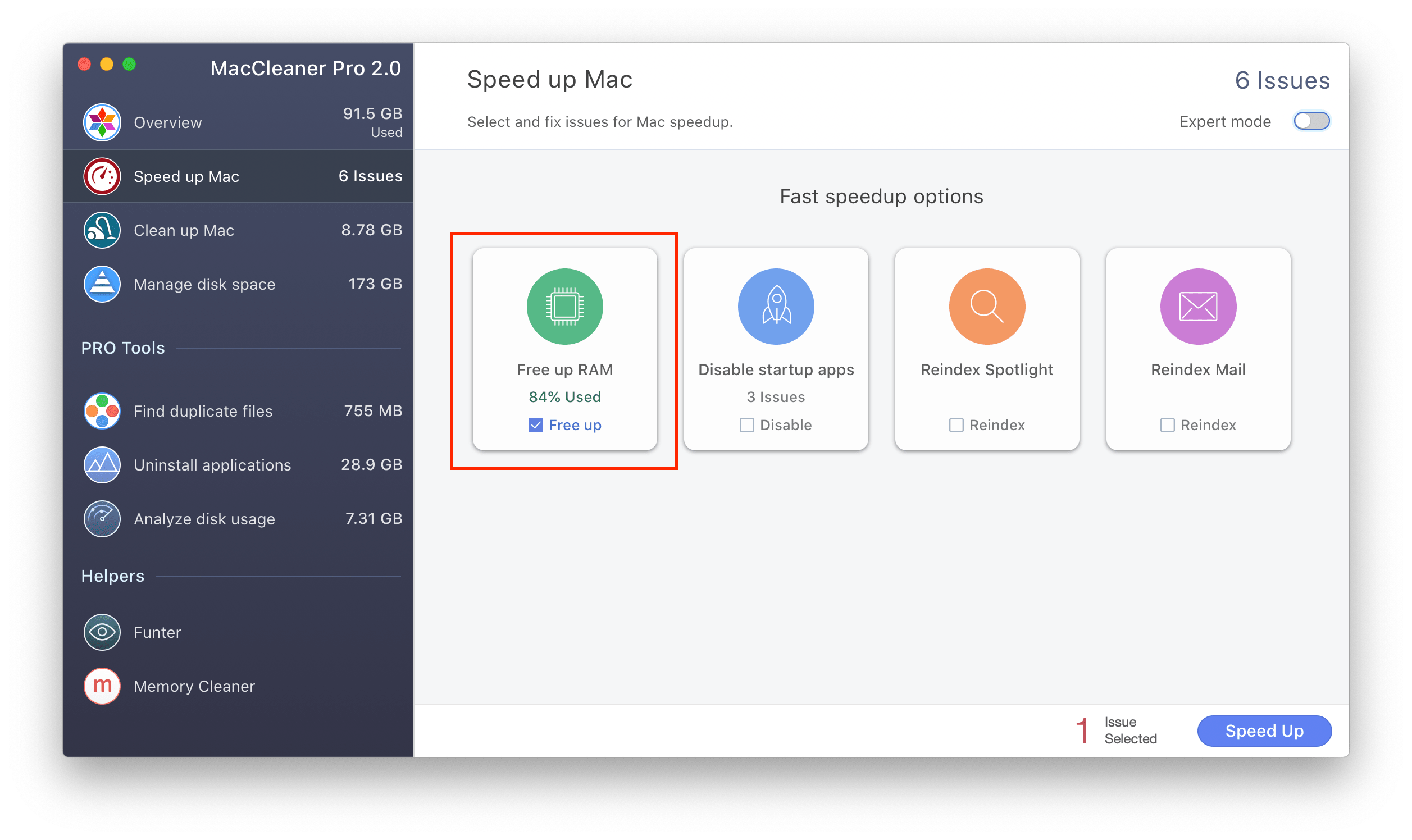
If your Mac is still slow, you can use additional speedup options in MacCleaner Pro to take your Mac run faster. Also, launch the extra tool, Remembering Cleaner, that works in the backclot and mechanically clears inactive RAM when memory space is filled.
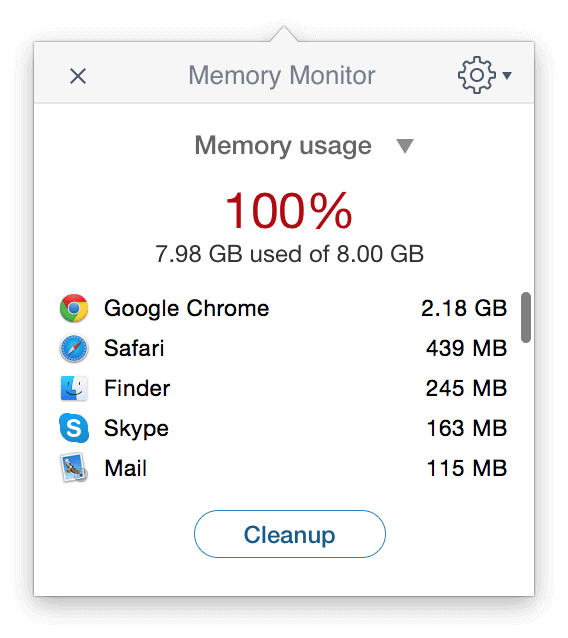
15. Resume Your Mackintosh
In one case you've clean ahead your hard ram, you should restart your Mac. A simple rebooting of the system can help to free up the disk space cluttered by temporary items and cache folders. Information technology wish also light the virtual memory and sleep image files.
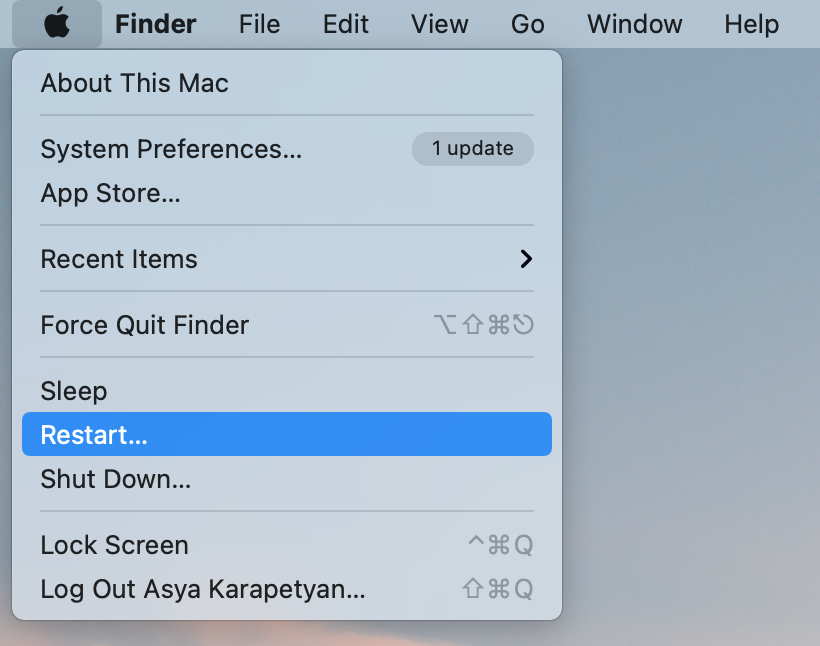
Podcast: How to fixing the full startup disk computer error
Conclusion
Well, that seems to exist wholly. Using these tips, you can delete adequate 20 GB of unneeded information from the computer. We hope these tips help you to free up disk space on your Mac and fix the "Startup Disk is Full" error subject matter. Just note that you can clean up your Mac manually, but this may direct too much clock. Too, you can apply professional tools, which save prison term and execute a quick, efficient cleanup of your hard drive.
how to clean up my startup disk
Source: https://nektony.com/mac-startup-disk-full
Posted by: navawhistaket.blogspot.com

0 Response to "how to clean up my startup disk"
Post a Comment